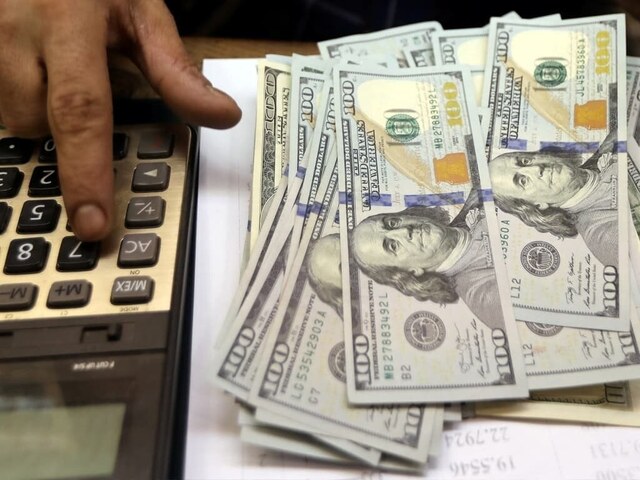
EDITORIAL: Pakistan’s current account position is once again under pressure. After a rare current account surplus of USD 2.1 billion in FY25, the account has slipped back into deficit in the first two months of FY26. The number is small—USD 624 million—but the signal is strong. The surplus was never structural. Its disappearance is therefore no surprise.
On a payment basis, imports of goods in Jul–Aug stood at USD 10.4 billion, up 9 percent year-on-year. Exports rose 10 percent to USD 5.3 billion.
The goods trade deficit widened to USD 5.1 billion in two months while the overall balance on goods and services reached USD 5.8 billion. Primary income outflows added another USD 1.5 billion, offset only partially by secondary income inflows, primarily workers’ remittances, of USD 6.8 billion. The headline surplus of last year has already vanished.
The import bill is rising across all categories. Food group imports in Jul–Aug climbed 37 percent year-on-year to USD 1.5 billion despite zero wheat or sugar purchases in the period. Palm oil imports rose 30 percent, while other food items nearly doubled to USD 460 million. This is not a price illusion. Volumes are rising, suggesting that consumption is rebounding even though household purchasing power has only marginally recovered. The signal is clear: when the economy breathes, the external account suffocates.
Machinery imports stood at USD 1.7 billion, up 23 percent. Mobile phones more than doubled to USD 300 million, but even excluding phones, machinery grew 13 percent. Textile machinery, office equipment, and construction and mining equipment all contributed to the rise. These are not signs of reckless spending; they are inputs into production capacity. Yet every machine Pakistan installs comes with a dollar invoice. The structure of growth is import-intensive.
Transport imports nearly doubled to USD 626 million. CKD car imports were up 130 percent to USD 305 million, while CBU bus imports jumped 185 percent to USD 34 million. Policymakers may restrict car financing or tax vehicles further, but even stripping out discretionary transport, the underlying import trajectory remains strong.
Petroleum provided superficial relief, with the bill down 5 percent to USD 2.5 billion. But volumes are up. Petroleum product imports increased 32 percent in quantity and crude by 5 percent. The fall in crude’s dollar value reflects prices, not policy. RLNG cargoes fell in value but remain contractually locked in. Pakistan’s energy bill is a function of world prices, not domestic choices.
Exports remain stagnant, inching up only 1 percent to USD 5.1 billion in Jul–Aug. Food exports fell 26 percent to USD 775 million. Rice shipments, inflated last year by India’s ban, normalised downward. Flood-related crop losses also dented volumes. Textiles grew 10 percent to USD 3.2 billion, led by garments and knitwear, but exporters continue to complain of high energy costs and punitive taxation. Other categories such as leather, sports goods, surgical instruments, among others, remain stuck in narrow bands. ICT exports rose 18 percent to USD 692 million, a bright spot but still small relative to the gap.
The export base is concentrated, shallow, and underperforming. Pakistan continues to sell the same basket of low-value goods into a world where demand is shifting. Each year policymakers celebrate minor percentage gains in textiles or ICT, while the absolute numbers remain inadequate.
The services balance added another USD 700 million to the deficit in Jul–Aug, as Pakistan paid out for freight, travel, and business services far more than it earned. The primary income account too remains the most damaging line. Outflows of USD 1.5 billion in two months nearly matched textile exports. This is debt service, profit repatriation, and interest obligations. It is the cost of survival on borrowed money. Every modest export or remittance gain is wiped out here.
Secondary income, dominated by remittances, is the only cushion. At USD 6.4 billion in Jul–Aug, remittances were up 7 percent year-on-year. But this is a sharp slowdown from the exceptional growth of FY25. Remittances depend on exchange rate policy and labor markets abroad. They are not a lever policymakers can pull at will. Treating them as a strategy is wishful thinking.
These flows highlight a solvency trap, not a cyclical imbalance. Pakistan cannot expand output without importing more. Whatever is earned is siphoned off in external obligations. Imports are structural, exports are narrow, remittances are volatile, and debt service is relentless. The surplus of FY25 was the product of an extraordinary remittance surge, not a transformation of competitiveness. The return to deficit in FY26 is not a reversal; it is a reversion to normal.
Policymakers will again be tempted to firefight. Expect talk of car taxes, mobile phone duties, financing caps, and administrative controls. None of these touches the structure of the problem.
The external account cannot be managed by tinkering with consumer imports. It can only be reset by dismantling tariff walls that inflate input costs, aligning the rupee to market to keep remittances formal and exports competitive, restructuring debt to create room for investment, and diversifying into new tradables such as agribusiness, engineering goods, and services.
Until these steps are taken, Pakistan’s balance of payments will continue to swing between statistical surpluses and cosmetic deficits.
Policymakers will package every surplus as a victory and every small deficit as a scare. But the truth is starker. The economy is being kept afloat not by productivity, not by competitiveness, but by the dollars of migrants remitting money home. That is not stability. It is an economy on life support.
Copyright Business Recorder, 2025



